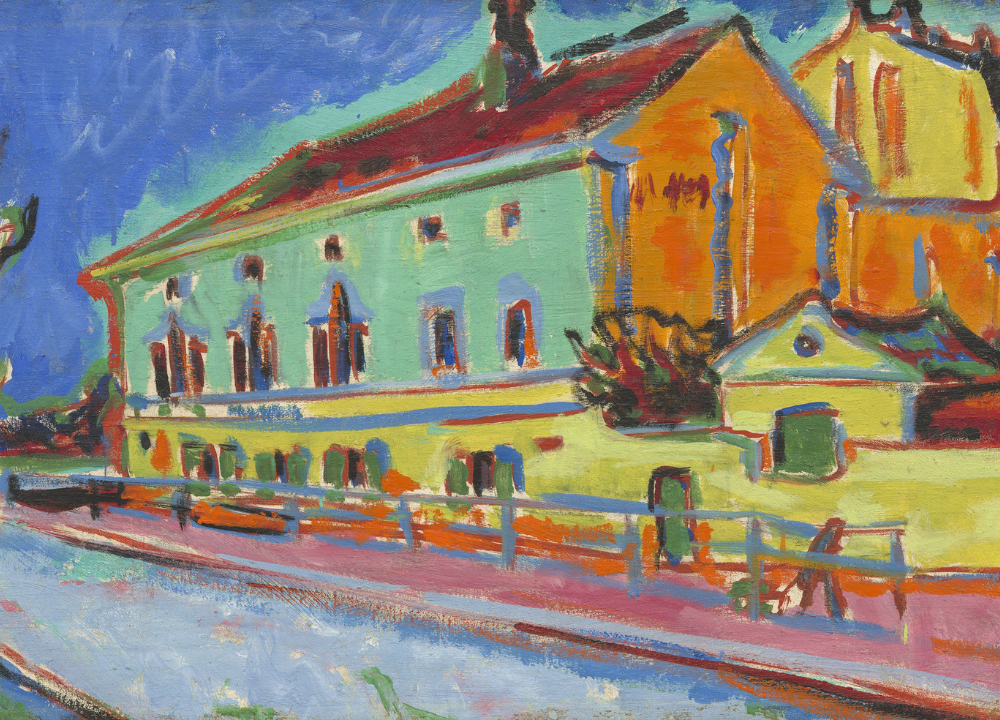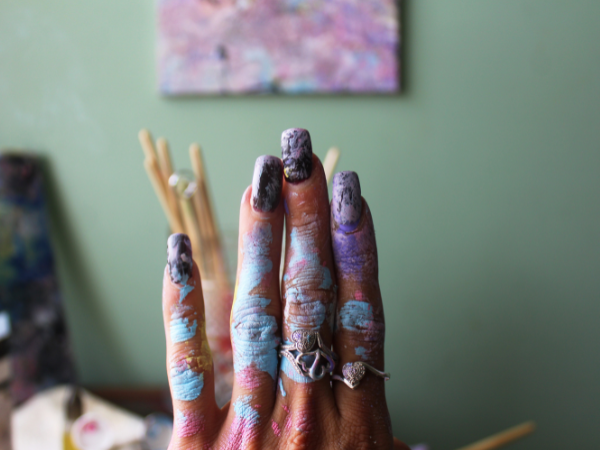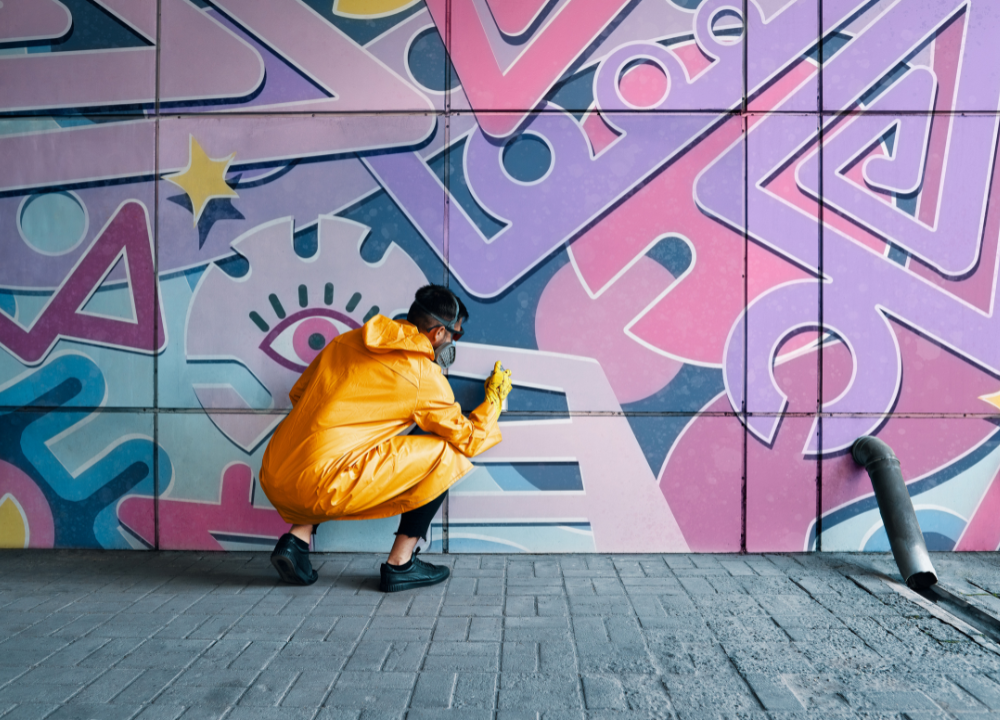“German Art Legends: A Journey Through Time And Canvas” offers a captivating exploration of the iconic figures and masterpieces that have shaped the German art scene. From the influential works of Albrecht Dürer to the avant-garde expressions of the Bauhaus movement, this book provides a comprehensive overview of the rich artistic heritage of Germany.
Delving into the lives and works of renowned artists such as Caspar David Friedrich and Otto Dix, it takes readers on a compelling journey through the evolution of German art, shedding light on the cultural, social, and historical contexts that have influenced these creative luminaries.
With insightful commentary and stunning visuals, this book is a must-read for art enthusiasts, history buffs, and anyone seeking a deeper understanding of the profound impact of German art on the global stage.
The Renaissance Era
The Renaissance period, spanning from the 14th to the 17th century, was a remarkable time in European history that saw a resurgence of art, culture, and intellectual activity. Germany, with its rich heritage and distinctive artistic tradition, played a significant role during this transformative era. Influenced by the Italian Renaissance, German artists added their unique perspective and creativity to create a distinct artistic movement.
Early Influences
During the early years of the Renaissance, German artists drew inspiration from various sources. The reintroduction of classical literature and philosophy had a profound impact on artistic expression. German painters started incorporating mythological themes and humanistic ideals into their artwork.
Furthermore, the advent of new techniques, such as linear perspective and chiaroscuro, revolutionized the way German artists approached their craft. These innovations allowed for a more realistic portrayal of space, forms, and lighting in paintings. This attention to detail and realism became a hallmark of German Renaissance art.
Emergence Of German Artists
As the Renaissance spread throughout Europe, German artists began to emerge and make their mark on the art world. Notable figures such as Albrecht Dürer, Hans Holbein the Younger, and Lucas Cranach the Elder pushed the boundaries of artistic expression and established themselves as pioneers in their own right.
Albrecht Dürer, often considered one of the greatest artists of the Northern Renaissance, was renowned for his mastery of engraving and woodcut techniques. His intricate attention to detail and skillful use of perspective revolutionized printmaking in Germany.
Hans Holbein the Younger, on the other hand, gained prominence through his remarkable portrait paintings. His ability to capture the likeness and personality of his subjects made his portraits highly sought after by the nobility and bourgeoisie.
Lucas Cranach the Elder, known for his vibrant and provocative paintings, tackled a wide range of subjects, including religious, mythological, and allegorical themes. His ability to infuse his works with symbolic meaning and social commentary set him apart from his contemporaries.
Together, these artists and many others defined the Renaissance era in Germany, leaving a lasting impact on art history. Their contributions continue to inspire and captivate art enthusiasts, making them true legends of the German art scene.
Baroque And Rococo Period
The Baroque and Rococo period is a captivating era in the world of art, characterized by grandeur, opulence, and intricate details. These two distinct styles emerged in Europe during the 17th and 18th centuries, leaving an indelible mark on the art world.
Impact Of Catholic Church
The Catholic Church played a significant role in shaping the art of the Baroque and Rococo period. This period witnessed a strong alliance between the church and artists, resulting in the creation of awe-inspiring masterpieces that reflected religious themes and served as powerful tools of communication. The church’s aim was to captivate and inspire the faithful, using art as a means to heighten their spiritual experiences.
During the Baroque era, the church commissioned artists to create larger-than-life paintings, sculptures, and architecture that celebrated the glory and majesty of the Catholic faith. Bold use of color, dramatic lighting, and dynamic compositions were employed to evoke deep emotions within the viewers and create a sense of awe and reverence.
The Rococo period, on the other hand, witnessed a shift towards a more delicate and ornate style. While the religious themes remained prevalent, the focus shifted towards creating a lighter and more playful atmosphere. The Catholic Church continued its patronage of the arts during this period, commissioning artists to adorn churches and palaces with intricate decorations and frescoes that exuded elegance and sophistication.
Regional Styles
One fascinating aspect of the Baroque and Rococo period is the emergence of regional styles. While the overarching characteristics of these periods can be observed throughout Europe, each region developed its unique flavor and interpretation of the styles.
In Italy, the Baroque period saw the rise of artists such as Caravaggio and Bernini, who embraced intense contrasts of light and shadow, creating a dramatic and emotional impact in their works. The art of the Italian Baroque often featured intricate details and vibrant colors, emphasizing the grandeur of the Catholic Church.
In France, the Rococo style flourished under the reign of Louis XV. Artists such as Jean-Antoine Watteau and Francois Boucher embraced a more delicate and graceful approach, creating whimsical scenes and elaborate decorations. The French Rococo art aimed to delight and entertain, often portraying scenes of leisure, romance, and nature.
Germany, too, developed its own distinct style, with artists like Johann Michael Rottmayr and Johann Baptist Zimmermann producing works that blended the grandeur of the Baroque style with a sense of playfulness and fantasy. The German Baroque and Rococo art often featured intricate details, dynamic compositions, and ornate architectural elements.
In conclusion, the Baroque and Rococo period witnessed the convergence of art and religion, with the Catholic Church serving as a prominent patron. The regional styles within these periods further added diversity and unique elements to the art world, making this era a rich tapestry of artistic expression.

19th Century Romanticism
German art in the 19th century underwent a profound transformation during the Romantic period, with artists seeking to evoke emotion, imagination, and a connection with nature through their works. This era saw the rise of artistic legends who encapsulated the essence of Romanticism through their masterpieces, shaping the artistic landscape for generations to come.
National Identity In Art
The 19th century in Germany marked a pivotal moment in the exploration and expression of national identity through art. Artists such as Caspar David Friedrich and Philipp Otto Runge sought to capture the unique spirit and essence of the German landscape, folklore, and traditions in their paintings. Their works celebrated the rural and natural beauty of Germany, fostering a sense of cultural pride and unity among the people.
Influence Of Goethe And Romantic Literature
German Romantic literature, particularly the works of Johann Wolfgang von Goethe, exerted a profound influence on the artistic movement of the 19th century. Goethe’s exploration of human emotions, the triumph of the individual spirit, and the sublime beauty of nature resonated deeply with artists, inspiring them to imbue their paintings with similar themes and sentiments. This fusion of literature and visual art produced timeless masterpieces that continue to captivate audiences worldwide.
20th Century Expressionism
20th Century Expressionism marks a significant period in German art history. This movement emerged as a response to the turmoil of the time and reflected a deep emotional and psychological exploration through art. German artists, such as Emil Nolde, Ernst Ludwig Kirchner, and Wassily Kandinsky, made profound contributions to 20th-century Expressionism, leaving a lasting impact on the art world.
Response To World Wars
Amidst the upheaval of the World Wars, German Expressionist artists sought to convey the intense emotions and experiences of the era. Their works depicted the societal disillusionment and emotional anguish brought forth by the violence and devastation of the wars. The raw and emotive nature of Expressionist art served as a means of processing and expressing the trauma of the time.
Contributions To Modern Art
German Expressionism played a pivotal role in reshaping the course of modern art. The vibrancy and emotional depth portrayed in Expressionist artworks paved the way for new artistic movements and techniques. Notably, their emphasis on conveying inner emotions and subjective experiences greatly influenced the development of abstract art and laid the groundwork for the future evolution of artistic expression.
Contemporary German Art
Discover the rich heritage of Contemporary German Art through a captivating visual journey that spans both time and canvas, exploring the legends that have shaped the German art scene. Immerse yourself in the artistic genius that defines the cultural landscape of Germany.
Germany’s rich artistic legacy extends beyond the renowned works of the Renaissance and Baroque periods. The country continues to be home to a vibrant and innovative art scene, where tradition and modernity collide, giving rise to a remarkable array of contemporary German artists. This article explores the distinct challenges faced by these artists, as well as their global recognition.

Challenges To Tradition
Contemporary German art emerged as a response to the changing social, political, and cultural landscapes of the 20th and 21st centuries. Artists sought to challenge traditional artistic norms and experiment with unconventional forms of expression. They bravely questioned established conventions and explored new territories in their quest for self-discovery, all while pushing boundaries and defying expectations.
One of the primary challenges these artists face is the pressure to live up to the legacy of their predecessors. With Germany’s rich artistic history, there is a constant demand for innovation and originality. Overcoming this obstacle requires artists to find their unique voice, establishing themselves as creators with a distinct vision and message. Through perseverance, they break free from the shadows of the past and carve their own path in the ever-evolving world of contemporary art.
Global Recognition
The contemporary German art scene has gained substantial global recognition, captivating audiences worldwide with its diversity and creativity. Artists like Gerhard Richter, Anselm Kiefer, and Neo Rauch have achieved international acclaim, becoming household names in the art world. This recognition is not merely a product of coincidence; rather, it is a result of the artists’ unwavering commitment to their craft.
They have skillfully utilized various mediums – from painting and sculpture to installation and performance art – to depict the complexities of the human experience and engage viewers on a profound emotional level. Their ability to resonate with audiences on a global scale speaks volumes about the universal themes and compelling narratives they convey through their creations. In a world that is increasingly interconnected, contemporary German artists continue to captivate art enthusiasts around the globe.
Their works transcend borders and cultures, bridging gaps and sparking conversations that stretch far beyond the confines of traditional art spaces. By pushing the boundaries of creativity and challenging established norms, these artists propel the German art scene to new heights, securing its place on the international stage.
The contemporary German art scene is an ever-evolving tapestry of social commentary, personal expression, and cultural exploration. It is a testament to the power of artistic vision and the resilience of artists who dare to challenge tradition. As we continue to witness the evolution of German art, we can expect to be enthralled and inspired by the extraordinary talents of these visionaries who continually redefine the boundaries of creativity.
Frequently Asked Questions For German Art Legends: A Journey Through Time And Canvas
Who Are Some Of The Famous German Artists In History?
Some of the famous German artists in history include Albrecht Durer, Hans Holbein the Younger, and Caspar David Friedrich. These influential artists have left a lasting impact on the art world with their unique styles and masterpieces.
What Are Some Renowned Art Movements In Germany?
Germany has been home to various renowned art movements, such as Expressionism, Bauhaus, and Neue Sachlichkeit. These movements were characterized by their innovative approaches to art and their contributions to the development of modern art.
How Has German Art Evolved Over Time?
German art has undergone significant transformations over time. From the intricate details of the Renaissance period to the bold and expressive styles of Expressionism, German artists have continually pushed the boundaries of artistic expression, reflecting the changing social, political, and cultural landscapes of their time.
What Themes And Subjects Have Inspired German Artists?
German artists have drawn inspiration from a wide range of themes and subjects throughout history. From landscapes and nature to religious and mythological narratives, German art showcases a diverse array of themes that reflect the artists’ interests, beliefs, and observations of the world around them.
Conclusion
As we conclude our journey through the captivating world of German art legends, we are left in awe of their immense talent and lasting impact. From the intricate details of Albrecht Dürer to the vibrant expressions of Ernst Ludwig Kirchner, these artists have shaped and enriched the art scene for centuries.
By exploring their works and stories, we gain a deeper appreciation for the beauty and cultural significance of German art. Let their masterpieces inspire and ignite your own artistic passion.




